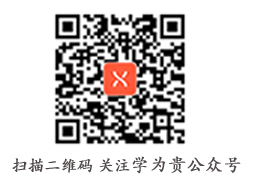学为贵托福培训(托福培训机构哪个好)项目部提供:从5月12日托福阅读真题分析提升托福成绩。
今天为大家分享一下托福考试一篇阅读题,请记住:打好基本功,学好知识体系才是提分关键,真题只是配合你知识体系学习,切莫本末倒置!
Europe in the High Middle Ages
Paragraph 1:
For 500 years after the fall of the Western Roman Empire in 476 A.D., a period known as the early Middle Ages, Europe endured an age of political instability, economic decline, and reduced population. But as the millennium approached, the situation began to improve. Toward the end of the tenth century, an increase in the amount of crop-producing land was accompanied by an increase in population, with the potential for that number to rise even higher. The increase in agricultural production came about as a result of a combination of factors, the most prominent of which were changing methods of field management and improvements in agricultural technology.
Paragraph 2:
For much of the early Middle Ages, peasants continued the Roman practice of dividing their fields in two leaving one fallow, or uncultivated, for a year, and planting their crops in the other half. Fallow land restored its nutrients, but the practice meant that half the land produced nothing every year. In southern Europe with its drier climate this system of two-field crop rotation continued, but in northern Europe, peasants improved on this system by dividing their land into three parts. One they left fallow, another they planted in the spring, and the third they planted with winter crops. This three-field crop rotation, dependent on more rainfall than southern Europe received, meant that two-thirds instead of one-half of a peasant's land was under production in one year.
1. Paragraph 2 suggests that the land-management practices developed in the north could not have been adopted in southern Europe because
A. the southern climate was too dry
B. southern farmers were too strongly tied to traditional Roman farming practices
C. the new practice would have required much additional farmland, which was lacking in the south
D. southern farmers had already developed a new crop-rotation system
Paragraph 3:
Related to the changes in crop rotation were improvements in plows and animal harnessing. More land under cultivation spurred experimentation in the construction of plows. Peasants attached wheels to their plows, which made it easier for oxen to pull them through the heavier, wetter soil of northern Europe, and made it possible for a plow to move more quickly down a row provided it had a speedy animal pulling it.
2. Which of the sentences below best expresses the essential information in the highlighted sentence in the passage Incorrect choices change the meaning in important ways or leave out essential information.
A. Peasants had to attach wheels to their plows to make it possible for their oxen to plow the heavy, wet soil of northern Europe.
B. With speedy oxen pulling the plow, peasants were able to plow the heavy soil of northern Europe.
C. Adding wheels to a plow made plowing the heavy soil of northern Europe much easier and potentially faster.
D. Attaching wheels to a plow made it necessary to use speedier animals.
Paragraph 4:
Oxen are slow and unintelligent compared to horses, but peasants could not use horses to pull plows until they devised a different kind of harnessing than the strap that circled an ox's neck. With a harness resting on its shoulders instead of its neck, a horse could be used to plow, and horses could walk more quickly and work longer hours than oxen. They also required less guidance, since they understood verbal signals to turn or to stop. Heavier, wheeled plows pulled by suitably harnessed horses meant that peasants could work more land in a day than ever before. Whether an increase in population across western Europe, but particularly in the north, stimulated innovations or whether such innovations contributed to a rise in population, the cumulative effect of these changes in agriculture was apparent in the tenth century. Conditions in Europe were ripe for an economic and cultural upswing.
3. According to paragraph 4, what initially kept farmers from using horses to pull their plows
A. Horses moved too quickly for traditional farm work.
B. Farmers did not have access to many horses.
C. Horses were thought to be too weak to pull plows.
D. The traditional harness was unsuitable for horses.
4. According to paragraph 4, farmers found horses to be better than oxen for pulling plows for all of the following reasons EXCEPT:
A. Horses are smarter than oxen.
B. Horses can pull plows faster.
C. Horses are able to plow for longer periods of time.
D. Horses do not need verbal signals to turn and stop.
5. The word “cumulative” in the passage is closest in meaning to
A. eventual
B. positive
C. combined
D. practical
6. The word “apparent” in the passage is closest in meaning to
A. welcome
B. noticeable
C. predictable
D. widespread
Paragraph 5:
Even before trade with the eastern Mediterranean increased starting in the twelfth century, trade and towns were on the rise. Travel was still dangerous, but merchants were willing to risk transporting goods over long distances. By the late thirteenth century, a few merchants from Italy had even reached China. Greater surpluses in crops meant people had more to sell at market. More people and goods led to regularly held markets in the most populated location in a region. It would be impossible to say whether trade gave rise to towns or vice versa. What is clear is that each fostered the other in conditions of greater social stability.
7.The word “each” in the passage refers to which of the following
A. people and goods
B. crop surpluses and markets
C. trade and towns
D. merchants from Italy and merchants from China
8.In paragraph 5, why does the author state that a few Italian merchants had reached China
A. To emphasize how much farther European merchants traveled during this time period than in previous centuries
B. To support the idea that Chinese goods were important for European merchants
C. To show how European merchants influenced Chinese markets
D. To indicate the wide-ranging tastes of European consumers during the thirteenth century
Paragraph 6:
Travel on trade routes increased, and some towns sprang up to provide rest and refreshment to traders. The distance between towns often correspondedto the distance that traders could cover in a day. Merchants kept their eyes open for customers with money to spend. The residences of kings, nobles, and powerful officials became sites of markets for local and long-distance traders. In Champagne, in northeastern France, six large annual markets attracted merchants from all over Europe in the twelfth century. Their different currencies prompted the first development of banking techniques. With the use of coins now the norm, money changers daily posted changing exchange rates so that merchants would know the worth of their coins in relation to the worth of other merchants' coins. By 1300, trade had transformed life for the better throughout western Europe.
9. The phrase “corresponded to” in the passage is closest in meaning to
A. approached
B. equaled
C. exceeded
D. determined
10. Paragraph 6 suggests that markets developed near the residences of kings, nobles, and powerful officials for which of the following reasons
A. Nobles and officials made it legal for merchants to sell their goods.
B. Merchants could sell their goods in relative safety at these sites.
C. Nobles and officials established their residences along traditional trade routes.
D. Merchants could sell their goods more easily to wealthy nobles and officials.
11. The phrase thenorm in the passage is closest in meaning to
A. acceptable
B. desirable
C. common
D. available
12. According to paragraph 6, what led to the development of the first banking techniques
A. Merchants from different European regions needed to compare the value of their currency at large markets.
B. Merchants participating in large markets wanted a place to safely store the money they made from their sales.
C. Organizers of large markets developed methods for determining the value of goods from long-distance traders.
D. Merchants needed to borrow money to buy the goods of other merchants at large markets.
13. Look at the four squares that indicate where the following sentence could be added to the passage.
A stronger part of the body had to bear the strain of pulling for the horse to become a useful farm animal.
Where would the sentence best fit Click on a square to add the sentence to the passage.
Paragraph 4:Oxen are slow and unintelligent compared to horses, but peasants could not use horses to pull plows until they devised a different kind of harnessing than the strap that circled an ox's neck. With a harness resting on its shoulders instead of its neck, a horse could be used to plow, and horses could walk more quickly and work longer hours than oxen. They also required less guidance, since they understood verbal signals to turn or to stop. Heavier, wheeled plows pulled by suitably harnessed horses meant that peasants could work more land in a day than ever before. Whether an increase in population across western Europe, but particularly in the north, stimulated innovations or whether such innovations contributed to a rise in population, the cumulative effect of these changes in agriculture was apparent in the tenth century. Conditions in Europe were ripe for an economic and cultural upswing.
14. Drag your choices to the spaces where they belong.
Answer Choices
○ Peasants in southern Europe developed a three-field system of crop rotation that was based on agricultural practices used by Roman farmers.
○ By rotating their land, using three fields rather than the traditional two, many northern farmers were able to harvest twice during the year, significantly increasing their annual production.
○ Agricultural innovations led to population growth everywhere in Europe, and the resulting towns were the reason that trade increased.
○ By using wheeled plows and replacing horses with oxen, farmers could plow the soil of Northern Europe more quickly, contributing to economic improvements.
○ As European town markets expanded to become trade centers selling goods from distant locations, the social and economic power of merchants increased.
○ A growing system of trade that included long-distance merchants and large annual markets contributed to innovations in economic practice and the flourishing of town culture.
答案:A C D D C B C A B D C A A BCF
(本篇文章由托福项目部王博老师发布)
最后预祝广大考生早日斩托成功!

更多托福资讯,请关注学为贵教育官网!届时,小贵贵将为广大贵粉们提供准确、及时、专业的托福信息。

 北京
北京
 400-6236-898
400-6236-898










 官方微信
官方微信
 官方微博
官方微博